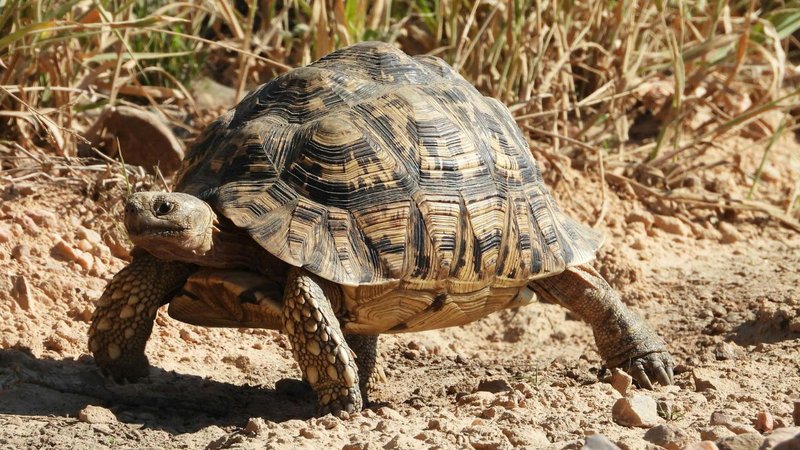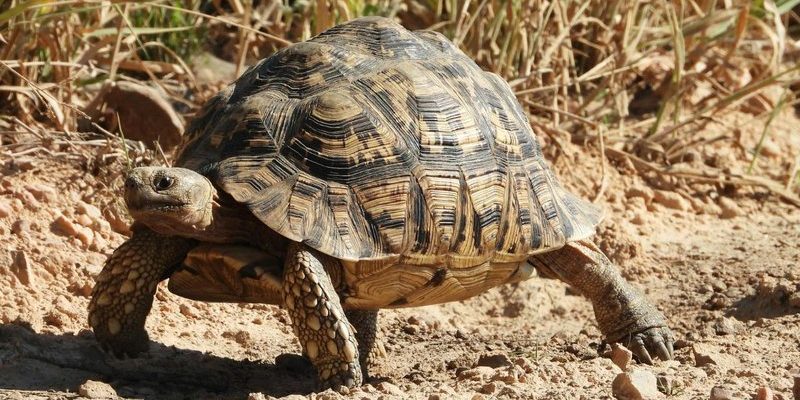
These unique creatures belong to a broader family called Testudines. They’ve been around for over 200 million years, which is longer than many dinosaurs! So, grab a comfy seat, maybe a warm cup of coffee, and let’s dive into the world of tortoises, where we’ll uncover ten captivating facts that highlight their incredible nature.
1. Ancient Travelers with Long Lifespans
Tortoises are known for their impressive longevity. Some species can live for over a century, with reports of certain individuals living up to 200 years! Imagine having a birthday cake with two centuries’ worth of candles. This long lifespan is largely due to their slow metabolism and careful lifestyles—a bit like having a wise, old grandparent who takes their time doing everything.
The *Galápagos tortoise* is one of the best-known long-livers. These giants can weigh over 500 pounds and have fascinating life stories that unfold over decades. Tortoises often face challenges in their environments, but their resilient nature helps them adapt and thrive.
2. Protective Shells: The Armor of Nature
A tortoise’s shell isn’t just for show. It’s a vital part of their anatomy, serving as their main defense against predators. Think of it as the tortoise’s personal fortress. Made up of a bony structure covered in scutes (the hard plates), it provides both protection and support. The shell is also a symbol of strength and perseverance.
Interestingly, a tortoise cannot leave its shell. It’s integrated into its body and helps protect vital organs. If you took a close look, you’d see that their shell has two main parts: the carapace (the top) and the plastron (the bottom). This unique adaptation allows them to tuck away safely inside when danger approaches, showing us the importance of having a “safe zone” in life.
3. Herbivores with a Taste for Greens
Most tortoises are *herbivores*, meaning they mainly eat plants. Their diet typically consists of grasses, leaves, and fruits, which is quite a contrast to the diets of other reptiles. You might be wondering, what’s so special about what they eat? Well, their digestive system has evolved to extract the maximum nutrients from tough plant material.
Many tortoises have specific preferences when it comes to food. For example, the *Aldabra tortoise* enjoys succulent grasses and flowering plants. A diet rich in fiber helps keep their digestive system healthy. Though they’re slow eaters, once they find a good patch of greens, they’re likely to munch away happily for hours!
4. Unique Ways to Communicate
You might think tortoises are quiet and solitary, but they actually have several interesting ways of communicating! While they don’t have vocal cords like us, they’re not completely shy. Tortoises use body language, head movements, and even certain sounds to express themselves.
During mating season, for instance, males may engage in head-bobbing displays to attract females. Sounds might include hissing or grunting, particularly when they’re agitated or trying to assert dominance. It’s fascinating to realize that they have their own ways of interacting, reminding us that communication comes in many forms.
5. A Diverse Family: Different Species, Different Habitats
There are over 300 species of tortoises worldwide, each adapted to their unique habitats. From the massive *Galápagos tortoise* to the tiny *Speckled tortoise*, their sizes and behaviors can vary widely. Some prefer dry, arid environments, while others thrive in lush, wet areas.
For example, the *Indian Star tortoise*, with its beautifully patterned shell, is native to dry regions in India and Sri Lanka. In contrast, the *Red-footed tortoise* is often found in rainforests, enjoying a diet rich in fruits and flowers. This diversity highlights how tortoises have evolved to fit into various ecological niches, making them incredibly adaptable creatures.
6. Slow and Steady Wins the Race
The saying “slow and steady wins the race” truly applies to tortoises. Their leisurely pace is a survival strategy. By moving slowly, they conserve energy and reduce the risk of attracting predators. Rather than darting away, they take their time, carefully assessing their surroundings before making any moves.
In their natural habitats, tortoises are often quite methodical. They don’t rush through life, which offers them the chance to explore their environment, forage for food, and enjoy their surroundings at a relaxed pace. It’s a gentle reminder for us to slow down and appreciate the world around us, rather than always racing ahead.
7. Unique Breeding Habits
Tortoises have some unique breeding habits that vary by species. Many do not care for their young after laying eggs. Instead, the females dig nests in warm sand or soft soil and bury their eggs. Once laid, it’s up to the eggs to fend for themselves.
Hatching is an exciting time—baby tortoises must dig their way out of the nest and immediately start their journey into the world. It’s a crucial moment filled with risk and adventure. Some species may take a year to hatch, which allows them to time their emergence with favorable environmental conditions. This highlights the tortoise’s instinct to survive and adapt to their surroundings, even from the start of life.
8. Environmental Importance
Tortoises play a crucial role in their ecosystems. By grazing on vegetation, they help to maintain the health of their habitats. This grazing encourages new plant growth and can even shape the landscape. In some areas, tortoise droppings act as natural fertilizer, aiding in seed dispersal and promoting plant diversity.
Their presence in the ecosystem is a sign of a healthy environment. When tortoise populations decline, it can lead to imbalances that affect other species. This emphasizes their importance not just as individuals but as part of a larger network of life, reinforcing the idea of interconnectedness in nature.
9. The Threats They Face
Despite their resilience, tortoises face numerous threats today. Habitat loss, climate change, and poaching are significant concerns. Urban development and agriculture can destroy their natural habitats, making it increasingly difficult for them to survive. Additionally, climate change affects their breeding and food sources.
Conservation efforts are crucial to protect these ancient animals. Organizations across the globe are working to preserve tortoise habitats and protect endangered species. It’s a collective effort that reminds us how important it is to safeguard our planet and its incredible biodiversity.
10. Tortoises in Culture and Mythology
Throughout history, tortoises have held symbolic significance in various cultures and myths. In many traditions, they represent wisdom, longevity, and stability. The famous fable “The Tortoise and the Hare” teaches us the value of patience and persistence.
Different cultures have their own stories featuring tortoises, from African folklore to Asian mythology. In art and literature, they often symbolize the idea that true strength doesn’t always come from speed but rather from steadfastness and the ability to endure life’s challenges. This rich cultural tapestry highlights how these animals resonate with humanity across ages and societies.
In conclusion, tortoises are truly remarkable creatures that offer us a window into the past and a lesson for the future. Their unique adaptations, behaviors, and cultural significance remind us of the beauty and complexity of the natural world. Next time you see a tortoise, take a moment to appreciate just how fascinating these animals really are!

